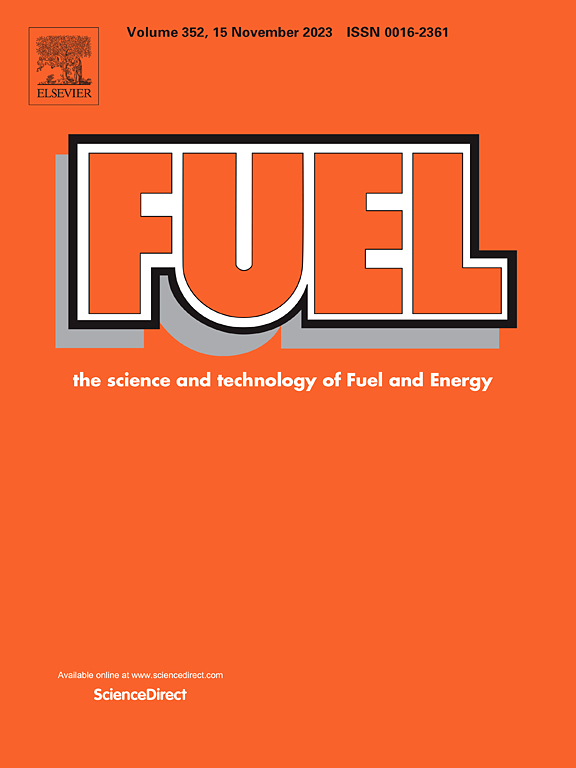IF 6.7
1区 工程技术
Q2 ENERGY & FUELS
引用次数: 0
摘要
中国拥有大量页岩油气资源,其中相当一部分是可开采的。水力压裂技术在提高石油采收率方面发挥着至关重要的作用。然而,由于页岩地层固有的弱点,准确预测水力压裂在复杂储层中的传播仍然具有挑战性。基于离散元素法(DEM),我们开发了一种包含射孔侵蚀和流量分布的耦合水力压裂模型。该模型模拟了水力压裂与天然薄弱面之间的机械相互作用,提供了对压裂形态、射孔侵蚀、流量分布和净压力反转的深入了解。结果表明,低胶结界面角有利于裂缝的垂直扩展,而较高的界面角则通过捕捉裂缝来限制裂缝的垂直扩展。由于剪切应力集中,垫层平面通过剪切破坏限制了垂直传播,而天然断裂带通过引起应力扰动加剧了非均匀传播。此外,断裂的非均匀扩展程度受水流分布的影响,而水流分布又受到射孔摩擦力的显著影响。研究结果揭示了水力压裂传播的机理和多压裂簇的不均匀传播行为,为理解水力压裂行为的支配原理提供了理论基础,特别是在解释层状储层中多簇水力压裂的非均匀传播方面。本文章由计算机程序翻译,如有差异,请以英文原文为准。
Mechanism of hydraulic fracture propagation and the uneven propagation behavior of multiple clusters in shale oil reservoirs
China possesses substantial shale oil and gas resources, a significant portion of which is recoverable. Hydraulic fracturing technology plays an essential role in enhancing oil recovery. However, accurately predicting the propagation of hydraulic fractures in complex reservoirs remains challenging due to the inherent weakness of shale formations. Based on the discrete element method (DEM), a coupled hydraulic fracturing model that incorporates perforation erosion and flow distribution was developed. This model simulates the mechanical interactions between hydraulic fractures and natural weak planes, providing insights into fracture morphology, perforation erosion, flow distribution, and net pressure inversion. Results show that low cementation interface angles facilitate vertical fracture propagation, while higher angles restrict vertical propagation by capturing fractures. Due to shear stress concentration, bedding planes limit vertical propagation through shear failure, and natural fracture zones exacerbate non-uniform propagation by inducing stress perturbations. Furthermore, the degree of non-uniform fracture propagation is influenced by flow distribution, which is significantly affected by perforation friction. The findings reveal the mechanisms of hydraulic fracture propagation and the uneven propagation behavior of multiple fracture clusters, offering a theoretical foundation for understanding the governing principles of hydraulic fracture behavior, particularly in explaining the non-uniform propagation of multi-cluster hydraulic fractures in layered reservoirs.
求助全文
通过发布文献求助,成功后即可免费获取论文全文。
去求助
来源期刊

Fuel
工程技术-工程:化工
CiteScore
12.80
自引率
20.30%
发文量
3506
审稿时长
64 days
期刊介绍:
The exploration of energy sources remains a critical matter of study. For the past nine decades, fuel has consistently held the forefront in primary research efforts within the field of energy science. This area of investigation encompasses a wide range of subjects, with a particular emphasis on emerging concerns like environmental factors and pollution.
 求助内容:
求助内容: 应助结果提醒方式:
应助结果提醒方式:


